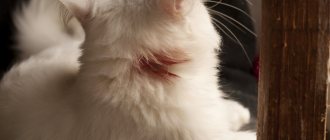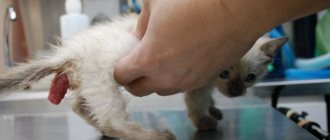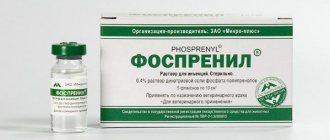What is coronavirus
In fact, this is not a separate pathogen, but a representative of the entire family Coronaviridae, which numbers about 40 viruses. They all have similar features. This:
- Structure.
The virus shell is studded with “spikes” that resemble a crown. This “appearance” actually gave this family its name. The “spikes” contain special proteins that act as a molecular knife, opening the cell membrane and allowing the virus to easily penetrate it. - Features of genetic material.
In coronaviruses, it is represented by RNA, with the help of which it starts the cycle of “production” of its own copies, using the resources of a living cell. - The ability to cause a wide range of diseases.
Depending on its tropism, coronavirus can affect the mucous membranes of the respiratory system, intestines or other tissues. - Species fitness.
Coronaviruses affect all warm-blooded animals: mammals and birds. Certain members of the family Coronaviridae are found only in a certain class (for example, birds), and the pathogen “prefers” only some species within this class (for example, Galliformes). Other coronaviruses are capable of infecting members of different families.
As for COVID-19, which is pathogenic for humans, no one has yet become infected with it from a dog, cat or hamster. Even in China. And the World Health Organization officially confirms this.
Coronaviruses that affect pets
None of the following pathogens are transmitted to humans and, accordingly, are unable to cause disease in humans. But these viruses are widespread among domestic and wild animals and can sometimes cross the interspecies threshold. Fortunately, this happens only in exceptional cases and under special circumstances. The most common diseases in pets caused by coronaviruses are:
Infectious bronchitis of chickens (IBC)
). Coronavirus affects the respiratory system of birds, which is manifested by severe wheezing, sneezing, and coughing. The infection can spread to the lungs and kidneys, which as a result leads to a severe decrease in the reproductive abilities of chickens, and egg production drops significantly. Young animals are at increased risk - IBV can be fatal in chickens. As a rule, the disease is acute.
Porcine infectious gastroenteritis (IPG)
). The disease is most dangerous for piglets under 10 days of age, since IGS often causes their death. Coronavirus affects the animal's intestinal mucosa, resulting in severe diarrhea. Animals quickly lose weight and become dehydrated. IHS can develop into a chronic form and also lead to bronchopneumonia.
Coronavirus diarrhea of newborn calves (NCD).
The disease manifests itself as profuse diarrhea, which lasts up to five days. Due to active loss of fluid in the body and severe digestive disorders, calves die from dehydration and general exhaustion.
Coronavirus infection in dogs (CVI).
A widespread infectious disease that affects animals of any age. It can cause damage to the intestines or respiratory organs individually or acquire a combined form.
Feline coronavirus enteritis (CVEEC).
Coronavirus causes inflammation of the intestinal mucosa, resulting in diarrhea. The disease most often occurs in a mild form.
Feline coronavirus peritonitis (FCP)
. Caused by the causative agent of coronavirus enteritis or its mutation. The disease in almost all cases ends in the death of the animal. IPC causes severe lesions in the tissues of the chest and/or abdominal cavity. It can have different forms - “dry” and “wet”.
The causative agent of coronavirus infection
Coronaviruses are common causative agents of serious diseases and are closely related strains of the same virus.
According to the Baltimore Classification of Viruses, the causative agent of coronavirus infection is IV: (+)ss RNA viruses Coronaviridae. And what a large number of them!
The coronavirus family includes viruses:
- infectious bronchitis of chickens (IB)
- infectious gastroenteritis of pigs (IGS)
- neonatal calf diarrhea coronavirus (NAD)
- turkey bluish virus (TBC)
- canine coronavirus (CCV)
- Feline coronavirus enteritis (CVIEC) and its modification
- Coronavirus feline peritonitis (FIP)
From this list we are only interested in:
Feline enteric coronavirus (FECV) and feline infectious peritonitis virus (FIPV)
FECV(feline enteritis)
It mainly affects the cells of the mucous membrane of the cat's small intestine and causes diarrhea (diarrhea). Kittens after one to two months are especially susceptible to the virus. The disease usually begins with vomiting, and then progresses to diarrhea, which lasts 2-4 days, after which recovery is observed. However, animals remain carriers of the virus for a long time, which is excreted in feces and easily infects other kittens if they use the same toilet. Although this is a very common and common disease in kittens, it is not so dangerous that it attracts much attention.
Infectious peritonitis (FIPV)
It occurs unexpectedly and seemingly spontaneously in kittens and young animals. In contrast to the disease described above, this disease almost inevitably ends in death. The virus infects macrophages (white blood cells, also known as leukocytes, also known as cells that carry out immune surveillance), destroying them and thereby opening the way for infection in the tissues.
How does this happen? And why is the disease almost always fatal?
Let's try to figure it out. Some may find this interesting. Follow my thought.
The virus entered the body through the nasopharynx. It could manifest itself by affecting the epithelium of the gastrointestinal tract (gastrointestinal tract). The virus could remain in the body for some time without manifesting itself in any way, from a very short to a very long time. But something happened. For unknown reasons, the virus has mutated, i.e. reborn and began to exhibit its highly pathogenic properties.
BUT. A terrible paradox of nature occurs.
The virus, which was absorbed by the macrophage, took root in it, settled well, fed on the reserves of this cell, destroyed it completely, left it and began to look for other cells in order to destroy everything there too. But we have not forgotten that these T-cells (macrophages) are the first defenders of the cat’s body, the first link of immunity, and when they completely die, the virus spreads everywhere.
The problem is that T cells (macrophages) are the main target of the virus. Macrophages captured by the virus can no longer give orders to the defense units. The immune system weakens. B cells (lymphocytes) are unable to destroy the virus. The immune system is completely weakened.
Viruses don't stop there. The hostilities between viruses and defenders continue in the blood and the virus thus spreads throughout the body. It especially likes to accumulate in places where there are many small blood vessels, and these are liver cells, spleen cells and others. If the immune system is weak, the virus destroys blood vessels and through their smallest microtraumas, blood leaks into the cavities. The largest cavity is the abdominal cavity. The abdominal cavity fills with fluid. Ascites (dropsy) occurs. This is wet peritonitis. The course of wet peritonitis is transient.
If the immune system continues to constantly actively resist, the process drags on for a long time, so-called dry peritonitis occurs, i.e. The infectious process involves the lungs, liver, nervous system, mucous membranes, and conjunctiva. Dry peritonitis continues for a long time. It is not immediately recognizable. Basically, all treatment is aimed at its manifestations, and not at itself.
As a rule, in both manifestations of viral infectious peritonitis, death occurs.
Perhaps this is all about how the disease develops.
The same mechanism of disease development occurs in feline viral leukemia and feline viral immunodeficiency. The main thing that happens in the body is the death of immune cells. That is why diseases are often considered similar to HIV - human viral immunodeficiency and its final stage AIDS - acquired immunodeficiency syndrome. The body has no chance to survive. He is not protected by anything.
Coronavirus in dogs
Coronavirus in dogs is caused by related viruses CCV and RCoV. They are widespread - suffice it to mention that more than 50% of animals kept at home have antibodies to these pathogens. This means that 50% or more of the individuals encountered the pathogen during their lives. And in dogs kept in enclosures, antibodies to these viruses are detected in 100% of individuals.
CCV virus.
Causes damage to the intestinal mucosa - the disease occurs in the form of enteritis, which develops most often in puppies and is usually mild. The following symptoms indicate a possible coronavirus infection:
- lack of appetite - the dog refuses even its favorite foods and treats;
- nausea, which can manifest itself in the form of vomiting or vomiting itself;
- diarrhea, frequent urge to bowel movement;
- the dog's indifferent attitude to what is happening;
- noticeable loss of body weight, which occurs due to prolonged refusal to eat and due to loss of fluid through vomiting.
With coronavirus enteritis, the general health of the dog is important. Weakened or young animals are at risk, since severe dehydration quickly leads to disruption of vital organs. Without timely and proper treatment, even the death of the dog is possible. Against the background of weakened immunity, bacterial infections can occur that can aggravate the course of the disease and affect the outcome.
RCoV virus.
It provokes “aviary cough” - a common disease in nurseries. Although this coronavirus itself is not life-threatening, it is rarely diagnosed as an independent infection - in most cases, RCoV is detected together with adenovirus, parainfluenza and other pathogens. Symptoms include:
- nasal discharge - at first the disease is watery or mucous, but transparent, and with the addition of a bacterial infection it becomes purulent;
- cough;
- sneezing;
- unusual “attention” to the nose - the dog tries to rub it against furniture, tries to wipe its nose with its front paws, etc.
Combined forms of the disease may also occur, in which coronavirus infection affects both the respiratory tract and the digestive system. Infection with both types occurs through the fecal-oral and airborne route - when infected saliva, mucus, and feces come into contact with the mucous membranes of dogs that carry the virus. These are not necessarily individuals with clinical signs of infection; the virus can also be spread by asymptomatic animals.
Coronavirus in cats
Coronavirus in cats can cause two types of diseases – enteritis or peritonitis.
FECV , Feline Coronavirus.
This virus attacks the intestinal mucosa, causing the animal to develop diarrhea. Kittens older than 1–2 months are most susceptible to the disease. As a rule, the disease is mild: after a period of 2-4 days of diarrhea, recovery occurs and the health or life of the animal is usually not in danger.
FIPV, Feline infectious peritonitis virus
. According to today's data, either a spontaneous mutation of the first virus, or a special strain. Causes a dangerous disease - infectious peritonitis. It occurs in two forms - dry and wet. With wet peritonitis, the animal experiences an increase in body temperature and bloating, which becomes more and more pronounced. This is due to the release of exudate into the abdominal cavity. The dry form of peritonitis has less pronounced symptoms: there is no bloating, the sick animal is lethargic and refuses to eat. Body temperature is increased. Although both described diseases develop according to different scenarios, in fact, they are caused by the same virus. Coronavirus peritonitis affects mainly animals with a low immune status, those in a state of chronic stress, kittens and young animals under 2 years of age.
Rotavirus enteritis in cats
Rotavirus enteritis (rotavirus gastroenteritis) is a disease caused by feline rotavirus and characterized by damage to the gastrointestinal tract. The causative agent is an RNA-containing rotavirus. It is characterized by tropism for the epithelial cells of the stomach and intestines (small intestine).
Epizootology . The source of infection is a sick cat. The main routes of infection transmission are alimentary (water, food), household contact, and airborne transmission is not excluded. dust path. The incubation period for this infection ranges from 15 hours to 5 days. In St. Petersburg, rotavirus enteritis in cats is extremely rare. And if it occurs, it occurs in kittens fed artificially. Mechanism of disease development. Rotavirus can reproduce only in the epithelial cells of the stomach and small intestine. Moreover, its favorite location is the enterocytes of the tips of the intestinal villi. When enterocytes and villi are damaged by the virus, hydrolysis and absorption of nutrients in the intestine are disrupted, and an inflammatory reaction occurs.
Symptoms . The disease in kittens begins acutely with severe pain and anxiety. The animal moves quickly, screams and meows. Palpation of the abdomen is painful. Fever and frequent vomiting are recorded. Body temperature can rise to 40°C. Somewhat later, an imperative urge to defecate appears. Feces are liquid, often mucous, sometimes mixed with blood. Dehydration may develop. Some sick kittens experience catarrhal symptoms in the stomach and intestines. The duration of the disease is from 3 to 10 days. The course is usually benign. Fatal outcome is rare. Pathoanatomical changes . At autopsy, catarrhal enteritis or gastroenteritis and signs of dehydration are found in dead kittens. Histological examination of the intestines of a fallen kitten reveals focal villous atrophy and metaplasia of enterocytes on individual villi.
The diagnosis can be confirmed by molecular genetic (PCR) and serological methods. Treatment is symptomatic. Sick animals are isolated in warm rooms and prescribed diet therapy. Rehydration therapy is indicated (Oralit, glucosolan, rehydron, etc.). A 5% glucose solution or an isotonic sodium chloride solution (can be mixed with glucose) is injected subcutaneously, 5-50 ml 3-6 times a day. B vitamins and ascorbic acid are used simultaneously with physiological fluids in therapeutic doses. Sometimes the best effect is achieved with the use of an immunostimulant (immunoglobulin), a cardiac agent (sulfocamphocaine) and an antibiotic (ampicillin, ampiox). These drugs are administered to animals under the supervision of a veterinarian.
Specific prevention has not been developed.
Treatment of coronavirus infections in animals
If it is determined that a dog or cat has become infected with coronavirus, treatment is prescribed taking into account the following circumstances:
- type of virus;
- severity of the disease;
- features of the clinical picture;
- general health indicators of the infected animal.
Depending on all identified features, treatment may include antidiarrheal, anti-inflammatory, rehydrating drugs; medications that stimulate the immune system, restoratives, etc. If a bacterial infection occurs, antibiotics are prescribed. The duration of treatment and prognosis for recovery depend on the characteristics of the disease and the animal’s response to therapy. It should be remembered that treatment of viral peritonitis in cats has exclusively palliative value and can only improve the quality of life.
Symptoms of coronavirus infection
Classic exudative (wet) feline infectious peritonitis (FIP) is characterized by the exudation of sticky, straw-colored fluid into the peritoneal and pleural cavities. And therefore, most often the disease is noticed by a progressively swollen abdomen, against the background of increased, fluctuating body temperature. This is the so-called “wet” form of FIP (“dropsy”).
But there is (much less often) a “dry” form, when there are no external signs, and only increased fluctuating temperature, lethargy, loss of appetite, and weight loss are observed. Non-exudative (dry) FIP is characterized by the manifestation of chronic granulomatosis of organs and systems. Both forms, unfortunately, are fatal. It is impossible to save sick animals.
There is no effective treatment for viral peritonitis. Treatment is mainly aimed at concomitant manifestations of the disease - hepatonephropathy, damage to the lungs and heart, and nervous manifestations. The veterinarian himself chooses the treatment tactics.
Prevention
The widespread prevalence of coronavirus infections makes prevention issues particularly relevant. For this purpose, the following activities are recommended:
- Vaccination
. This is the most reliable way to prevent the development of diseases caused by viruses. It is carried out as planned, upon reaching the “vaccination age”. If we are talking about vaccination in nurseries or farms, all animals and poultry are subject to vaccination to form mass immunity. Unfortunately, not all infections have vaccinations and they do not always provide a 100% guarantee of absence of infection. Coronaviruses are still poorly understood. But it is possible to protect animals from other viruses, because any viral disease lowers immunity. - Quarantine
. Newly arrived animals, as well as pets with changes in appetite, behavior, etc., should be isolated from the rest. The duration of quarantine is usually 14 days, but isolation can be extended if there are reasons for this. - Regular implementation of sanitary and hygienic measures
. In rooms where animals and poultry are kept primarily indoors, high-quality ventilation should be ensured. It is mandatory to clean the premises using disinfectants and regularly treat feeders and drinking bowls with disinfectants. For pets kept at home, overcrowding, fighting and other stress factors should be avoided. - Prevention of other diseases
. Like any other infections, coronaviruses are more likely to lead to the death of weakened and sick animals. Therefore, it is important to carry out routine deworming and treatment for skin parasites, to provide animals and poultry with proper care and maintenance, and to vaccinate against other infections. Such measures help strengthen the body’s defenses and reduce the likelihood of severe coronavirus infections and unfavorable outcomes of such diseases.











